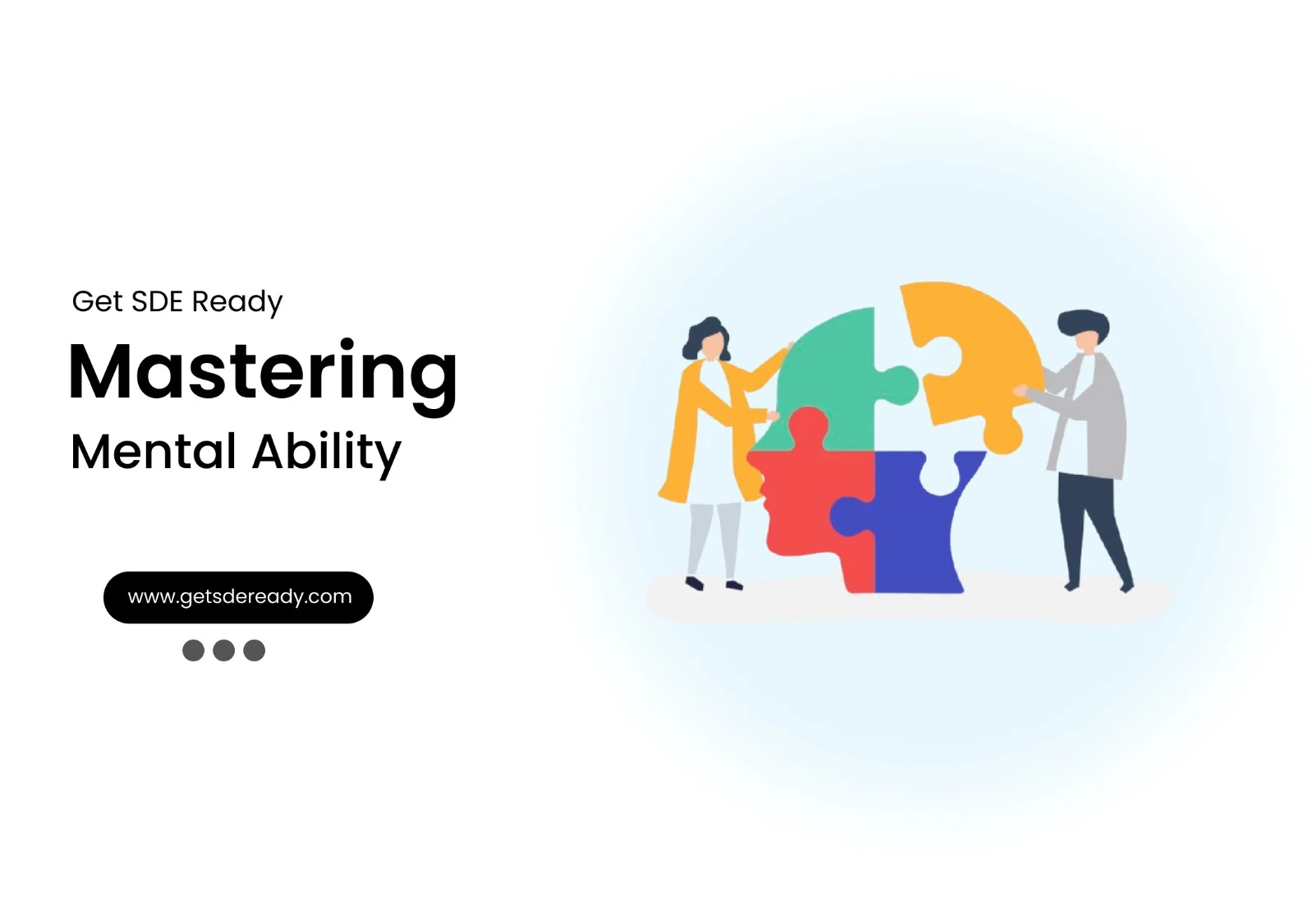Data Structures and Algorithms
- Introduction to Data Structures and Algorithms
- Time and Space Complexity Analysis
- Big-O, Big-Theta, and Big-Omega Notations
- Recursion and Backtracking
- Divide and Conquer Algorithm
- Dynamic Programming: Memoization vs. Tabulation
- Greedy Algorithms and Their Use Cases
- Understanding Arrays: Types and Operations
- Linear Search vs. Binary Search
- Sorting Algorithms: Bubble, Insertion, Selection, and Merge Sort
- QuickSort: Explanation and Implementation
- Heap Sort and Its Applications
- Counting Sort, Radix Sort, and Bucket Sort
- Hashing Techniques: Hash Tables and Collisions
- Open Addressing vs. Separate Chaining in Hashing
- DSA Questions for Beginners
- Advanced DSA Questions for Competitive Programming
- Top 10 DSA Questions to Crack Your Next Coding Test
- Top 50 DSA Questions Every Programmer Should Practice
- Top Atlassian DSA Interview Questions
- Top Amazon DSA Interview Questions
- Top Microsoft DSA Interview Questions
- Top Meta (Facebook) DSA Interview Questions
- Netflix DSA Interview Questions and Preparation Guide
- Top 20 DSA Interview Questions You Need to Know
- Top Uber DSA Interview Questions and Solutions
- Google DSA Interview Questions and How to Prepare
- Airbnb DSA Interview Questions and How to Solve Them
- Mobile App DSA Interview Questions and Solutions
DSA Interview Questions
- DSA Questions for Beginners
- Advanced DSA Questions for Competitive Programming
- Top 10 DSA Questions to Crack Your Next Coding Test
- Top 50 DSA Questions Every Programmer Should Practice
- Top Atlassian DSA Interview Questions
- Top Amazon DSA Interview Questions
- Top Microsoft DSA Interview Questions
- Top Meta (Facebook) DSA Interview Questions
- Netflix DSA Interview Questions and Preparation Guide
- Top 20 DSA Interview Questions You Need to Know
- Top Uber DSA Interview Questions and Solutions
- Google DSA Interview Questions and How to Prepare
- Airbnb DSA Interview Questions and How to Solve Them
- Mobile App DSA Interview Questions and Solutions
Data Structures and Algorithms
- Introduction to Data Structures and Algorithms
- Time and Space Complexity Analysis
- Big-O, Big-Theta, and Big-Omega Notations
- Recursion and Backtracking
- Divide and Conquer Algorithm
- Dynamic Programming: Memoization vs. Tabulation
- Greedy Algorithms and Their Use Cases
- Understanding Arrays: Types and Operations
- Linear Search vs. Binary Search
- Sorting Algorithms: Bubble, Insertion, Selection, and Merge Sort
- QuickSort: Explanation and Implementation
- Heap Sort and Its Applications
- Counting Sort, Radix Sort, and Bucket Sort
- Hashing Techniques: Hash Tables and Collisions
- Open Addressing vs. Separate Chaining in Hashing
- DSA Questions for Beginners
- Advanced DSA Questions for Competitive Programming
- Top 10 DSA Questions to Crack Your Next Coding Test
- Top 50 DSA Questions Every Programmer Should Practice
- Top Atlassian DSA Interview Questions
- Top Amazon DSA Interview Questions
- Top Microsoft DSA Interview Questions
- Top Meta (Facebook) DSA Interview Questions
- Netflix DSA Interview Questions and Preparation Guide
- Top 20 DSA Interview Questions You Need to Know
- Top Uber DSA Interview Questions and Solutions
- Google DSA Interview Questions and How to Prepare
- Airbnb DSA Interview Questions and How to Solve Them
- Mobile App DSA Interview Questions and Solutions
DSA Interview Questions
- DSA Questions for Beginners
- Advanced DSA Questions for Competitive Programming
- Top 10 DSA Questions to Crack Your Next Coding Test
- Top 50 DSA Questions Every Programmer Should Practice
- Top Atlassian DSA Interview Questions
- Top Amazon DSA Interview Questions
- Top Microsoft DSA Interview Questions
- Top Meta (Facebook) DSA Interview Questions
- Netflix DSA Interview Questions and Preparation Guide
- Top 20 DSA Interview Questions You Need to Know
- Top Uber DSA Interview Questions and Solutions
- Google DSA Interview Questions and How to Prepare
- Airbnb DSA Interview Questions and How to Solve Them
- Mobile App DSA Interview Questions and Solutions
Machine Learning for Software Engineers in 2025 – Where to Start
As a software engineer in 2025, diving into machine learning (ML) isn’t just a smart career move—it’s essential for staying relevant in an AI-driven world. With rapid advancements like generative AI and edge computing reshaping industries, learning ML can open doors to innovative projects and higher-paying roles. If you’re ready to get a head start, sign up for our newsletter here to receive free introductory courses and the latest updates on ML resources tailored for developers like you.
In this comprehensive guide, we’ll explore where to begin your ML journey, from foundational concepts to practical applications. Whether you’re building recommendation systems or optimizing code with AI, this post draws on the latest trends, statistics, and expert insights to provide actionable advice. By the end, you’ll have a clear roadmap to integrate ML into your software engineering toolkit.
Why Software Engineers Should Learn Machine Learning in 2025
The tech landscape in 2025 is dominated by AI integration, and software engineers who master ML are poised for success. According to recent projections, the ML engineering job market is set to reach $113.10 billion this year, growing to $503.40 billion by 2030. This explosive growth is fueled by demands in sectors like healthcare, finance, and autonomous systems, where ML enhances decision-making and automation.
The Evolving Job Market
- High Demand and Salaries: In the US, the average ML engineer salary hovers around $155,000, with experienced professionals (10+ years) earning over $191,000. Globally, AI-related jobs have surged, with over 170 million new roles expected this decade. Roles like ML specialists and AI developers are among the fastest-growing, outpacing traditional software positions.
- AI’s Impact on Software Roles: AI tools are automating routine tasks like code generation and bug detection, allowing engineers to focus on creative problem-solving. For instance, machine learning techniques predict buggy code areas from past test results, improving efficiency.
- Future-Proofing Your Career: By 2025, AI will reshape developer roles, blending efficiency with creativity, as noted by experts like Charlie Clark, founder at Liinks. Learning ML ensures you’re not replaced but empowered by these tools.
Key Trends Driving the Need
ML trends in 2025 emphasize accessibility and real-world application:
- Generative AI and Small Language Models (SLMs): Shifting from resource-heavy LLMs to efficient SLMs for edge devices, enabling mobile AI apps.
- AutoML and MLOps: Automating ML workflows to speed up deployment, making it easier for engineers to integrate AI without deep expertise.
- Ethical AI and Machine Unlearning: Focus on privacy, with techniques to “forget” data for compliance, addressing biases in models.
- Convergence with IoT: Real-time decision-making in connected devices, optimizing resource allocation in industries like manufacturing.
As a software engineer, these trends mean ML isn’t optional—it’s a multiplier for your skills. For those building full-stack applications, combining ML with web development can create intelligent systems; check out our web development course for foundational synergies.
Building a Strong Foundation for Machine Learning
Before jumping into ML models, solidify your basics. Most software engineers already have programming experience, but ML requires specific prerequisites.
Essential Prerequisites
- Mathematics: Linear algebra for vector operations, calculus for optimization, probability for uncertainty handling, and statistics for data analysis. These form the backbone of algorithms like neural networks.
- Programming: Python is king, used in 72% of ML job postings. Focus on libraries like NumPy and pandas for data manipulation.
- Data Structures and Algorithms (DSA): Understanding trees, graphs, and sorting is crucial for efficient ML implementations. If you need a refresher, our DSA course offers in-depth modules to build this base.
Start with 1-3 months on these foundations. Resources like DataCamp’s Statistics Fundamentals with Python track can help.

Transitioning from Software Engineering
Leverage your existing skills in software design to approach ML as an extension. Think of models as “code” that learns from data, requiring clean pipelines and versioning—skills honed in our master DSA, web dev, and system design course.
Key Machine Learning Concepts to Master
ML isn’t about memorizing; it’s about understanding how data drives predictions. Here’s a breakdown for software engineers.
Types of Learning
- Supervised Learning: Labeled data for tasks like classification (e.g., spam detection) and regression (e.g., price prediction). Algorithms include linear regression, logistic regression, and support vector machines (SVM).
- Unsupervised Learning: Finds patterns in unlabeled data, such as clustering (k-means) or dimensionality reduction (PCA).
- Reinforcement Learning (RL): Agents learn through trial and error, ideal for robotics or game AI, with RLHF fine-tuning models like LLMs.
Core Algorithms and Techniques
- Neural Networks and Deep Learning: Layers of interconnected nodes for complex tasks like image recognition. Key concepts: backpropagation, CNNs for visuals, RNNs for sequences.
- Feature Engineering: Transforming raw data into useful inputs, a critical step where software engineers excel.
- Model Evaluation: Metrics like accuracy, precision, recall, and F1-score to assess performance.
For deeper dives, explore multimodal ML, combining text, images, and audio for human-like processing.
Essential Tools and Frameworks for 2025
In 2025, ML tools prioritize efficiency and scalability.
Popular Frameworks
- PyTorch (42% of job postings): Flexible for research and production, great for dynamic neural networks.
- TensorFlow (34%): Robust for large-scale deployment, with TensorFlow Lite for edge devices.
- Scikit-learn (14%): Ideal for classical ML algorithms like regression and clustering.
- Keras: High-level API for quick prototyping on top of TensorFlow.
MLOps and Deployment Tools
- MLflow and SageMaker: For workflow orchestration and monitoring.
- Docker and Kubernetes: Containerization for scalable deployments, mentioned in 15% of postings.
Cloud skills are vital—AWS leads with 35% of mentions. For data science integration, our data science course covers these tools hands-on.
Hands-On Learning: Practical ML Projects
Theory alone won’t cut it—projects build expertise. Here are beginner-friendly ideas with real-world impact.
- House Price Prediction: Use regression on datasets like Boston Housing to forecast prices based on features like location and size. Source code available on GitHub.
- Sentiment Analysis: Analyze tweets or reviews for positive/negative sentiment using NLP libraries. Great for social media apps.
- Music Recommendation System: Build a collaborative filtering model with the Movielens dataset to suggest songs.
- Stock Price Predictor: Apply time series forecasting with ARIMA on financial data.
- Iris Flower Classification: Simple supervised learning to classify species, perfect for starters.
Aim for 5-10 projects in your portfolio. For quick wins, try our crash course to prototype these fast.
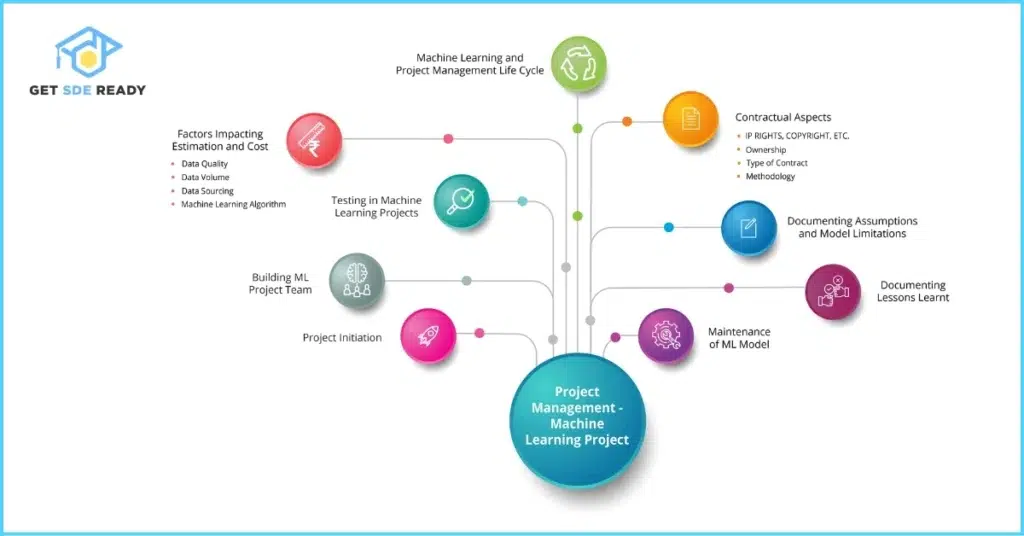
Top Resources for Learning ML in 2025
Curate your learning with these up-to-date resources.
Online Courses
- Andrew Ng’s Machine Learning Specialization on Coursera: Covers basics to advanced topics.
- DataCamp’s AI Fundamentals Certification: Interactive tracks on Python and ML.
- Udemy’s Machine Learning A-Z: Hands-on with real experts.
Books (Free Options)
- Mathematics for Machine Learning: Essential math foundations.
- Reinforcement Learning: An Introduction: Deep dive into RL.
- Interpretable Machine Learning: Focus on explainability.
Communities and Practice
Join Reddit’s r/learnmachinelearning or Kaggle for competitions. Practice on platforms like GitHub’s project-based learning repos.
Overcoming Common Challenges in Learning ML
ML learning has hurdles, but they’re surmountable.
- Talent Shortage and Saturation: While competitive, focus on niche skills like NLP (19.7% of postings) to stand out.
- Data Quality Issues: Clean data meticulously; use augmentation for scarcity.
- Black Box Problem: Prioritize interpretable models in sensitive areas.
- Time Management: Break projects into stages; use AutoML to accelerate.
Ethical concerns like bias? Implement governance frameworks early. Stay motivated by tracking progress and collaborating.
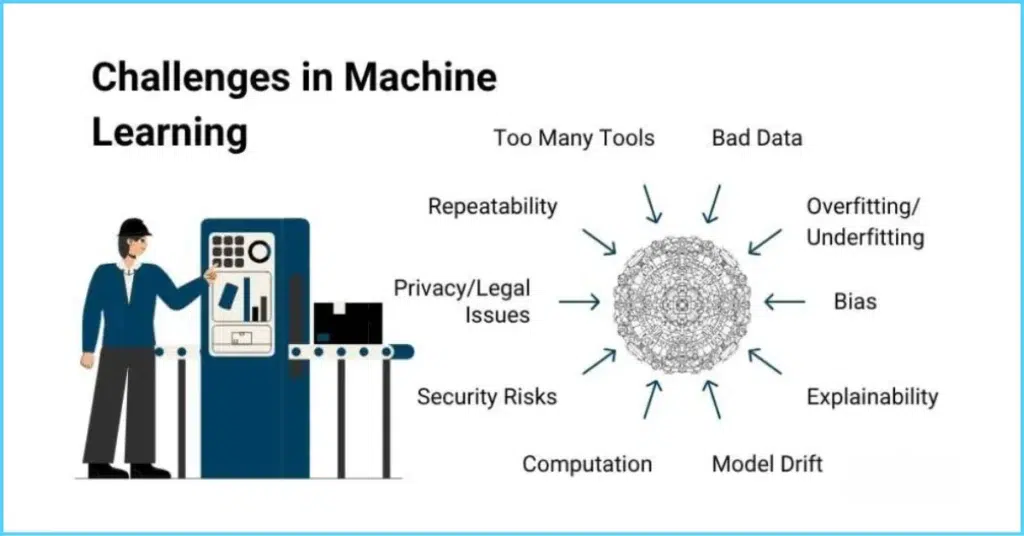
Career Opportunities and Next Steps
In 2025, ML opens roles like ML Engineer (average $168,730 salary) and AI Specialist. Transition by upskilling in cloud and MLOps—PhDs are valued in 36% of postings, but experience matters more.
Actionable Steps:
- Assess your skills and fill gaps.
- Complete a course and build a project.
- Network on LinkedIn and apply for junior roles.

Ready to accelerate? Explore our courses for structured guidance.
In conclusion, starting ML in 2025 as a software engineer is about blending your coding prowess with data-driven intelligence. With dedication, you’ll not only adapt but thrive. What’s your first project? Share in the comments!
FAQs
What is the best way to learn machine learning for beginners in 2025?
Start with Python basics, math foundations, and courses like Andrew Ng’s on Coursera, then build projects for hands-on experience in AI and data science.
What are the top machine learning trends for software engineers in 2025?
Key trends include generative AI, AutoML, edge computing, and ethical AI, focusing on SLMs and MLOps for efficient model deployment.
How much do machine learning engineers earn in 2025?
Average salaries range from $155,000 in the US, with experienced roles exceeding $191,000, driven by high demand in AI and predictive modeling.
What skills do software engineers need for machine learning careers?
Essential skills include Python, TensorFlow/PyTorch, data pipelines, NLP, and cloud platforms like AWS for building scalable AI systems.
Are there free resources for learning machine learning in 2025?
Yes, free books like “Mathematics for Machine Learning,” Coursera audits, and Kaggle datasets offer accessible paths to master algorithms and deep learning.
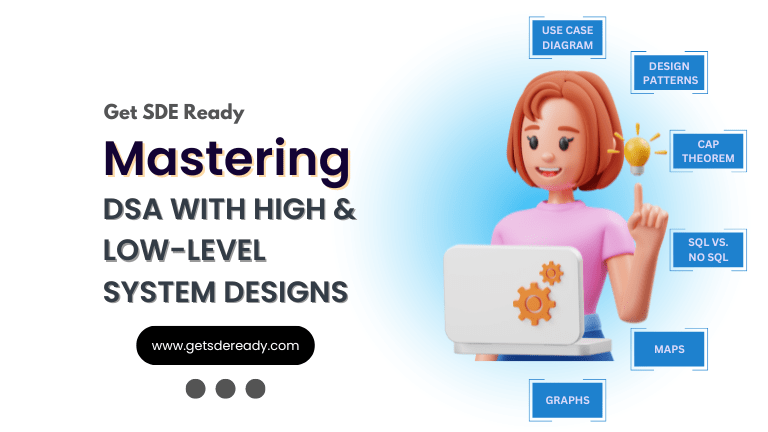
DSA, High & Low Level System Designs
- 85+ Live Classes & Recordings
- 24*7 Live Doubt Support
- 400+ DSA Practice Questions
- Comprehensive Notes
- HackerRank Tests & Quizzes
- Topic-wise Quizzes
- Case Studies
- Access to Global Peer Community
Buy for 52% OFF
₹25,000.00 ₹11,999.00
Accelerate your Path to a Product based Career
Boost your career or get hired at top product-based companies by joining our expertly crafted courses. Gain practical skills and real-world knowledge to help you succeed.
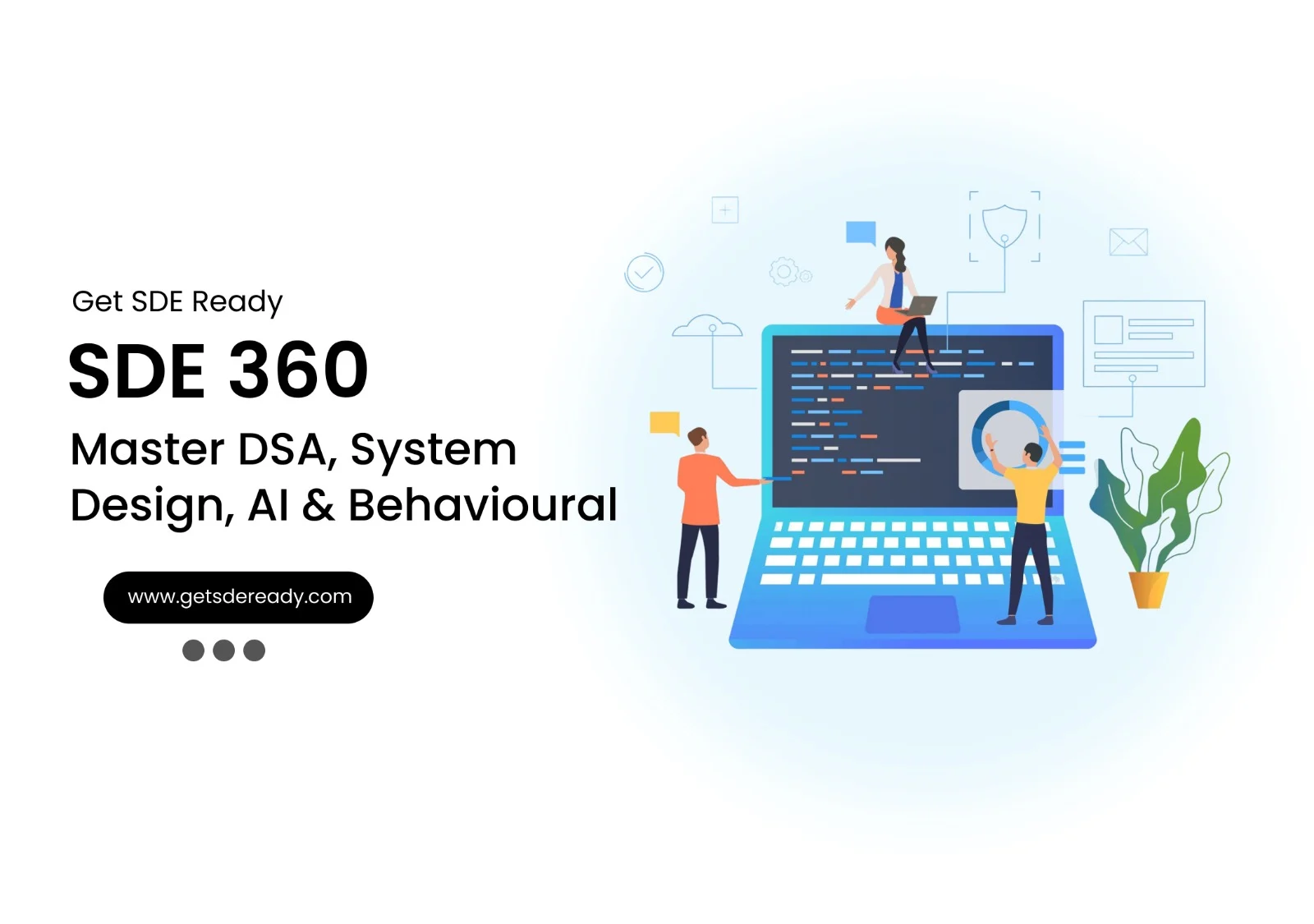
SDE 360: Master DSA, System Design, AI & Behavioural
- 100+ Live Classes & Recordings
- 24*7 Live Doubt Support
- 400+ DSA Practice Questions
- Comprehensive Notes
- HackerRank Tests & Quizzes
- Topic-wise Quizzes
- Case Studies
- Access to Global Peer Community
Buy for 50% OFF
₹39,999.00 ₹19,999.00

DSA, High & Low Level System Designs
- 85+ Live Classes & Recordings
- 24*7 Live Doubt Support
- 400+ DSA Practice Questions
- Comprehensive Notes
- HackerRank Tests & Quizzes
- Topic-wise Quizzes
- Case Studies
- Access to Global Peer Community
Buy for 52% OFF
₹25,000.00 ₹11,999.00
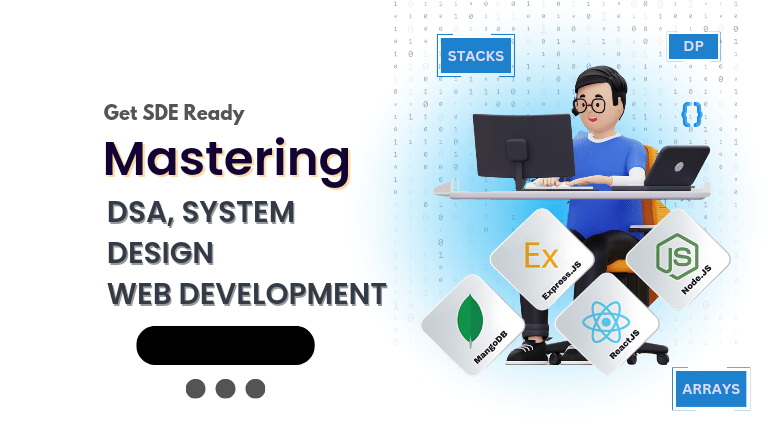
Fast-Track to Full Spectrum Software Engineering
- 120+ Live Classes & Recordings
- 24*7 Live Doubt Support
- 400+ DSA Practice Questions
- Comprehensive Notes
- HackerRank Tests & Quizzes
- 12+ live Projects & Deployments
- Case Studies
- Access to Global Peer Community
Buy for 51% OFF
₹35,000.00 ₹16,999.00
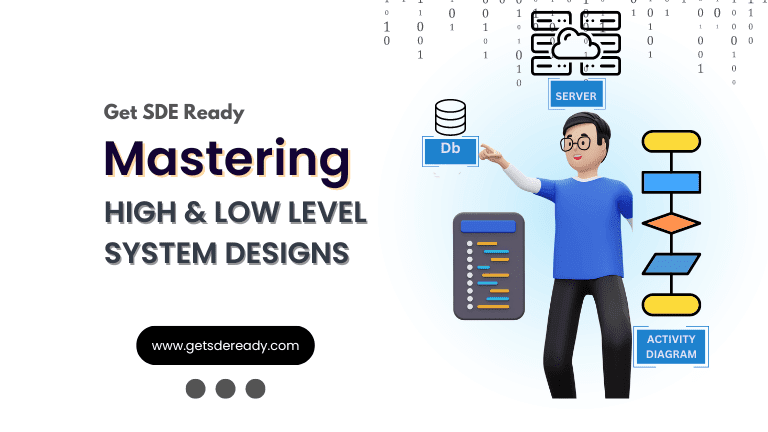
Low & High Level System Design
- 20+ Live Classes & Recordings
- 24*7 Live Doubt Support
- Case Studies
- Comprehensive Notes
- HackerRank Tests
- Topic-wise Quizzes
- Access to Global Peer Community
- Interview Prep Material
Buy for 60% OFF
₹20,000.00 ₹7,999.00
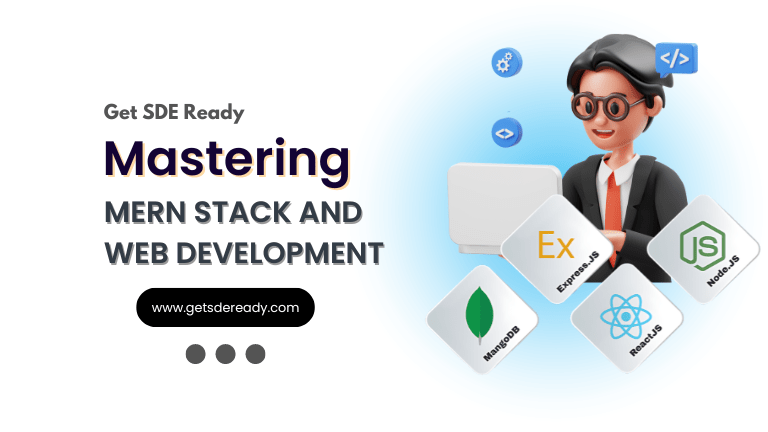
Mastering Mern Stack (WEB DEVELOPMENT)
- 65+ Live Classes & Recordings
- 24*7 Live Doubt Support
- 12+ Hands-on Live Projects & Deployments
- Comprehensive Notes & Quizzes
- Real-world Tools & Technologies
- Access to Global Peer Community
- Interview Prep Material
- Placement Assistance
Buy for 53% OFF
₹15,000.00 ₹6,999.00
Reach Out Now
If you have any queries, please fill out this form. We will surely reach out to you.
Contact Email
Reach us at the following email address.
arun@getsdeready.com
Phone Number
You can reach us by phone as well.
+91-97737 28034
Our Location
Rohini, Sector-3, Delhi-110085
